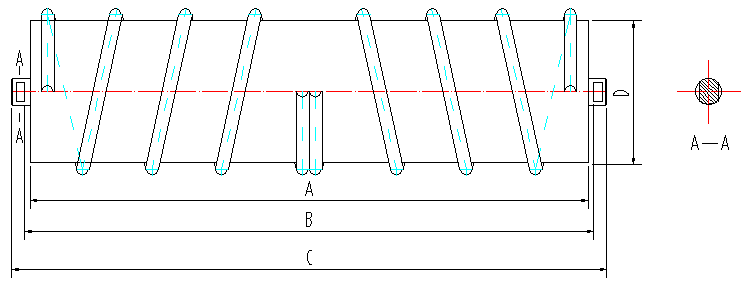 Afrikaans
Afrikaans  Albanian
Albanian  Amharic
Amharic  Arabic
Arabic  Armenian
Armenian  Azerbaijani
Azerbaijani  Basque
Basque  Belarusian
Belarusian  Bengali
Bengali  Bosnian
Bosnian  Bulgarian
Bulgarian  Catalan
Catalan  Cebuano
Cebuano  Corsican
Corsican  Croatian
Croatian  Czech
Czech  Danish
Danish  Dutch
Dutch  English
English  Esperanto
Esperanto  Estonian
Estonian  Finnish
Finnish  French
French  Frisian
Frisian  Galician
Galician  Georgian
Georgian  German
German  Greek
Greek  Gujarati
Gujarati  Haitian Creole
Haitian Creole  hausa
hausa  hawaiian
hawaiian  Hebrew
Hebrew  Hindi
Hindi  Miao
Miao  Hungarian
Hungarian  Icelandic
Icelandic  igbo
igbo  Indonesian
Indonesian  irish
irish  Italian
Italian  Japanese
Japanese  Javanese
Javanese  Kannada
Kannada  kazakh
kazakh  Khmer
Khmer  Rwandese
Rwandese  Korean
Korean  Kurdish
Kurdish  Kyrgyz
Kyrgyz  Lao
Lao  Latin
Latin  Latvian
Latvian  Lithuanian
Lithuanian  Luxembourgish
Luxembourgish  Macedonian
Macedonian  Malgashi
Malgashi  Malay
Malay  Malayalam
Malayalam  Maltese
Maltese  Maori
Maori  Marathi
Marathi  Mongolian
Mongolian  Myanmar
Myanmar  Nepali
Nepali  Norwegian
Norwegian  Norwegian
Norwegian  Occitan
Occitan  Pashto
Pashto  Persian
Persian  Polish
Polish  Portuguese
Portuguese  Punjabi
Punjabi  Romanian
Romanian  Russian
Russian  Samoan
Samoan  Scottish Gaelic
Scottish Gaelic  Serbian
Serbian  Sesotho
Sesotho  Shona
Shona  Sindhi
Sindhi  Sinhala
Sinhala  Slovak
Slovak  Slovenian
Slovenian  Somali
Somali  Spanish
Spanish  Sundanese
Sundanese  Swahili
Swahili  Swedish
Swedish  Tagalog
Tagalog  Tajik
Tajik  Tamil
Tamil  Tatar
Tatar  Telugu
Telugu  Thai
Thai  Turkish
Turkish  Turkmen
Turkmen  Ukrainian
Ukrainian  Urdu
Urdu  Uighur
Uighur  Uzbek
Uzbek  Vietnamese
Vietnamese  Welsh
Welsh  Bantu
Bantu  Yiddish
Yiddish  Yoruba
Yoruba  Zulu
Zulu conveyor belt pulley lagging
Conveyor Belt Pulley Lagging Enhancing Performance and Longevity
In industrial applications, the efficiency and reliability of conveyor systems are critical. One of the key components that significantly affect the performance of these systems is the pulley, particularly its lagging. Conveyor belt pulley lagging refers to the material that is applied to the outer surface of a pulley. This seemingly minor element plays a vital role in the overall functionality of conveyor systems.
Purpose of Lagging
The primary purpose of pulley lagging is to provide better traction between the conveyor belt and the pulley. By enhancing this connection, lagging minimizes slippage, ensuring that the belt moves smoothly along the conveyor system. This improved traction reduces the risk of belt misalignment and extends the life of both the belt and the pulley. Furthermore, proper lagging can reduce the wear and tear on these components, ultimately leading to lower maintenance costs and enhanced operational efficiency.
Material Selection
When it comes to lagging materials, there are several options available, each with its own benefits and applications. Common materials include rubber, ceramic, and polyurethane. Rubber lagging is the most widely used due to its excellent coefficient of friction and its ability to withstand wear. It is available in different grades, making it suitable for various environmental conditions. Ceramic lagging, on the other hand, is ideal for high-friction applications or in conditions where the conveyor handles heavy loads, as it offers superior grip and durability. Meanwhile, polyurethane lagging provides a balance between flexibility and hardness, making it suitable for applications with moderate wear.
conveyor belt pulley lagging

Installation and Maintenance
The effectiveness of pulley lagging is closely linked to proper installation and ongoing maintenance. It is essential that lagging is installed without any gaps or misalignment to ensure optimal performance. Operators should regularly inspect the lagging for signs of wear or damage, and timely replacement should be conducted to prevent performance degradation. Establishing a routine maintenance schedule can help detect issues early and ensure that the conveyor system runs at peak efficiency.
Impact on Operational Efficiency
Investing in high-quality pulley lagging can significantly impact the overall efficiency of a conveyor system. When lagging is properly maintained, it can lead to fewer unplanned downtimes and less frequent repairs, translating to higher productivity. Additionally, minimizing slippage reduces energy consumption, contributing to a more sustainable operation.
In conclusion, conveyor belt pulley lagging is a crucial component that warrants careful consideration by industries relying on conveyor systems. From improving traction and reducing wear to enhancing operational efficiency, effective lagging can lead to substantial benefits, making it an essential aspect of conveyor maintenance strategies. By focusing on quality materials and proper upkeep, businesses can ensure their conveyor systems run smoothly for years to come.
-
Revolutionizing Conveyor Reliability with Advanced Rubber Lagging PulleysNewsJul.22,2025
-
Powering Precision and Durability with Expert Manufacturers of Conveyor ComponentsNewsJul.22,2025
-
Optimizing Conveyor Systems with Advanced Conveyor AccessoriesNewsJul.22,2025
-
Maximize Conveyor Efficiency with Quality Conveyor Idler PulleysNewsJul.22,2025
-
Future-Proof Your Conveyor System with High-Performance Polyurethane RollerNewsJul.22,2025
-
Driving Efficiency Forward with Quality Idlers and RollersNewsJul.22,2025





























